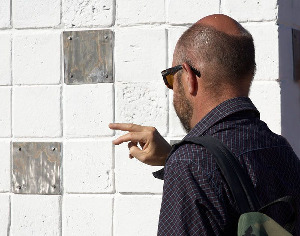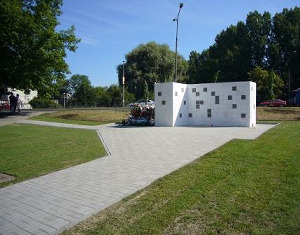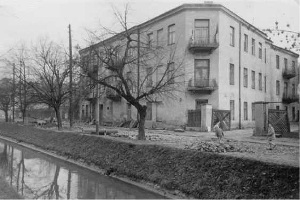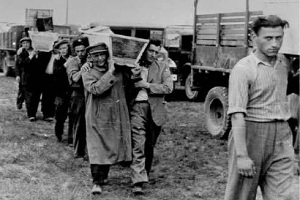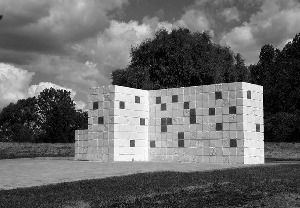|
Kielce Memory/Memorial Title: White/Wash II - A Memorial for the Victims of the 1946 Pogrom Sponsor: United States Commission for The Preservation of Americas Heritage Abroad Location: Municipal Park, City of Kielce, Poland Materials: Concrete Blocks, Lead Sheets Date: 2006 Articles: Back to Permanent Installations Object/Reference Artwork/Representation Where politics, institutions and debate fail I offer the intelligence and The creation of White/Wash II will bring people to visit the monument in the public area of Kielce and will allow a meeting of the past and present out in the open, a forum of great importance if this wound of Planty Street is to heal. Jack SalJuly 4, 2006 Kielce
In May 2003 I created an installation/exhibition for the Dom Srodowisk Tworczych, Galeria Sztuki Wspólczesenej under the directorship of Magdalena Kustal and curated by Matgorzata Bielecka of the Akademia Swiçtokrzyska in Kielce. During my stay in Kielce I became aware that there is no public sculpture, away from the site of the pogrom or the cemetery and synagogue, that reminds the inhabitants of Kielce or those visiting of the event and equally importantly the Jewish community. Also I was informed that many Jews visit Kielce but find very little to see of its former Jewish life. Upon meeting with the mayor of Kielce, Wojeich Lubawski, we agreed to look into the possibility of creating a public “presence” by situating an artwork in the public gardens of the Municipal City Hall. This location is used daily by the people of Kielce. Its choice reflects the willingness of Kielce to include the events of July 4, 1946 as part of the history of the town rather than isolating it to the back streets. My work would consist of square cement blocks constructed in the shape of a right angle: the number 7 on its side. Forty two (42) of the blocks will be covered with lead sheets and placed at random across the face of the work, representing the 42 victims of July 4, 1946. In addition a lead plate will be marked with the date of the pogrom and the date of the works completion. The opportunity to create a work to bring people to visit a monument in the public park of Kielce will allow a meeting of the past and present out in the open, a forum of great importance for this wound of Planty Street to begin to heal. Before World War II, 24,000 of Kielce’s residents were Jewish. Most were deported to concentration camps and their death from this site. After the Holocaust, 150 returned in search of their families and to reclaim their homes. On July 1, 1946, while the Jews were staying at the former Jewish community center at 7 Planty Street, the center was surrounded by a mob. Appeals for protection to civic and church leaders were of no avail and resulted in the police confiscating the few weapons held by the Jews. On July 4, 1946, a mob attacked and killed 42 of the Jews and wounded 50 more. The mob was inspired by false rumors that the Jews were killing Christian children and drinking their blood and that a Polish boy had been killed in the basement of the center and his blood used to make matzoth. The Polish boy was soon found unharmed in a nearby village. Seven people responsible for the massacre were sentenced to death and executed by the authorities. News of the event convinced many Holocaust survivors throughout Central and Eastern Europe that it was not safe for Jews to return to their homes. As a consequence of the Kielce massacre, hundreds of thousands migrated to Israel, the United States, and other parts of the world. |
|
